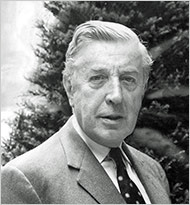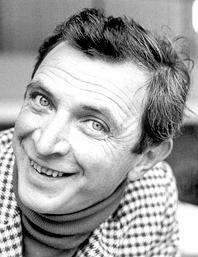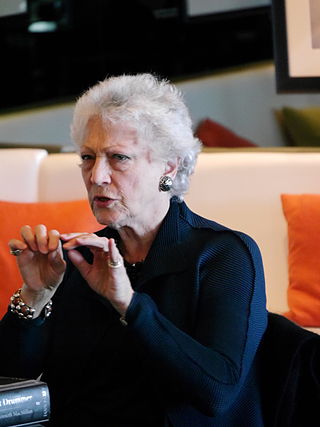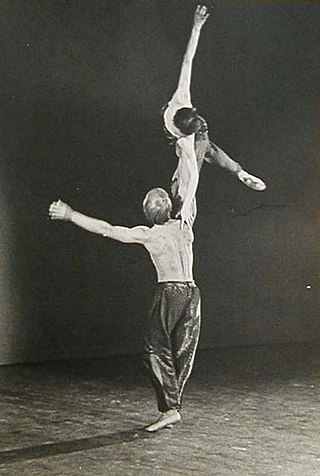Related Research Articles

Dame Ninette de Valois was an Irish-born British dancer, teacher, choreographer, and director of classical ballet. Most notably, she danced professionally with Serge Diaghilev's Ballets Russes, later establishing the Royal Ballet, one of the foremost ballet companies of the 20th century and one of the leading ballet companies in the world. She also established the Royal Ballet School and the touring company which became the Birmingham Royal Ballet. She is widely regarded as one of the most influential figures in the history of ballet and as the "godmother" of English and Irish ballet.

Sir Frederick William Mallandaine Ashton was a British ballet dancer and choreographer. He also worked as a director and choreographer in opera, film and revue.

Birmingham Royal Ballet (BRB) is one of the five major ballet companies of the United Kingdom, alongside The Royal Ballet, the English National Ballet, Northern Ballet and Scottish Ballet. Founded as the Sadler's Wells Theatre Ballet, the company was established in 1946 as a sister company to the earlier Sadler's Wells company, which moved to the Royal Opera House that same year, subsequently becoming known as The Royal Ballet.

Dame Alicia Markova DBE was a British ballerina and a choreographer, director and teacher of classical ballet. Most noted for her career with Sergei Diaghilev's Ballets Russes and touring internationally, she was widely considered to be one of the greatest classical ballet dancers of the twentieth century. She was the first British dancer to become the principal dancer of a ballet company and, with Dame Margot Fonteyn, is one of only two English dancers to be recognised as a prima ballerina assoluta. Markova was a founder dancer of the Rambert Dance Company, The Royal Ballet and American Ballet Theatre, and was co-founder and director of the English National Ballet.

The Royal Ballet is a British internationally renowned classical ballet company, based at the Royal Opera House in Covent Garden, London, England. The largest of the five major ballet companies in Great Britain, the Royal Ballet was founded in 1931 by Dame Ninette de Valois. It became the resident ballet company of the Royal Opera House in 1946, and has purpose-built facilities within these premises. It was granted a royal charter in 1956, becoming recognised as Britain's flagship ballet company.

The Royal Ballet School is a British school of classical ballet training founded in 1926 by the Anglo-Irish ballerina and choreographer Ninette de Valois. The school's aim is to train and educate outstanding classical ballet dancers, especially for the Royal Ballet and the Birmingham Royal Ballet.

John Cyril Cranko was a South African ballet dancer and choreographer with the Royal Ballet and the Stuttgart Ballet.
English National Ballet is a classical ballet company founded by Dame Alicia Markova and Sir Anton Dolin as London Festival Ballet and based in London, England. Along with The Royal Ballet, Birmingham Royal Ballet, Northern Ballet and Scottish Ballet, it is one of the five major ballet companies in Great Britain. English National Ballet is one of the foremost touring companies in Europe, performing in theatres throughout the UK as well as conducting international tours and performing at special events. The Company employs approximately 67 dancers and a symphony orchestra,. In 1984 Peter Schaufuss became director and changed the name to English National Ballet and founded the school English National Ballet School, which is independent from the ballet company but joining the company premises in the new building. The Company regularly performs seasons at the London Coliseum and has been noted for specially staged performances at the Royal Albert Hall. In 2014 English National Ballet became an Associate Company of Sadler's Wells.

Dame Monica Mason is a former ballet dancer, teacher, and director of The Royal Ballet. In more than fifty years with the company, she established a reputation as a versatile performer, a skilled rehearsal director, and a capable administrator.

Sir Kenneth MacMillan was a British ballet dancer and choreographer who was artistic director of the Royal Ballet in London between 1970 and 1977, and its principal choreographer from 1977 until his death. Earlier he had served as director of ballet for the Deutsche Oper in Berlin. He was also associate director of the American Ballet Theatre from 1984 to 1989, and artistic associate of the Houston Ballet from 1989 to 1992.
Yvonne Cartier was a New Zealand-born ballet dancer and instructor, and mime. Her artistic biography coincides with the rebirth of theatrical dancing in England after World War II.
Nadia Nerina was a South African dancer who was "one of the most gifted, versatile, and inspiring ballerinas of The Royal Ballet" during the 1950s and 1960s. She was known "for her technical virtuosity, lightness afoot, effortless-seeming jumps, and joyful charm onstage, especially in comedic roles."
David Poole was a South African ballet dancer, choreographer, teacher, and company director. During his thirty-year association with dance companies in Cape Town, he had "a profound effect on ballet in South Africa. He is internationally recognised as a significant figure in the world of dance.

Galina Samsova was a Russian ballet dancer and company director.

Sir David Julian Bintley is an English former ballet dancer, the artistic director of the Birmingham Royal Ballet, and co-artistic director of the New National Theatre Tokyo ballet company.
British ballet is most recognised for two leading methods, those of the Royal Ballet School and the Royal Academy of Dance. The identifying characteristic of British ballet is the focus on clean, precise technique and purity of line that is free of exaggeration and mannerisms. The training of dancers in Britain is noted for its slow progression, with a great deal of attention paid to basic technique. British ballet methods operate on the principle that establishing correct technique and strength slowly makes it much easier for the student to adapt to more difficult vocabulary and techniques later on.
John Field was an English ballet dancer, choreographer, director and teacher. He was a renowned member of the Vic-Wells Ballet and Sadler's Wells Theatre Ballet and was also artistic director of the La Scala Theatre Ballet.

Pamela May OBE was a Trinidad-born British dancer and teacher of classical ballet. Most noted as one of the earliest members of The Royal Ballet, she was regarded as a versatile dancer; dancing all the established 19th-century classical repertoire, and creating roles in new ballets by Ninette de Valois and Frederick Ashton. After retiring from professional ballet, she became a teacher at the Royal Ballet School, and also served as vice-president of the Royal Academy of Dance.
Alexis Rassine was a South African ballet dancer who enjoyed his greatest success with the Sadler's Wells Ballet in England in the 1940s and early 1950s. He is remembered as a classical dancer who made "a major contribution to British ballet" during wartime and "helped to keep the flag flying when all about was chaos and disaster."
Carl Myers is a British former professional ballet dancer now living in Rangiora, New Zealand, and a former Principal of The Royal Ballet and Birmingham Royal Ballet.
References
- ↑ Trucco, Terry (14 January 1989). "Sadler's Wells Ballet to Quit London Next Year". The New York Times. Retrieved 13 December 2010.
- ↑ Craine, Debra (8 December 2007). "Christmas cracker". The Times. Retrieved 13 December 2010.
- ↑ United Kingdom list: "No. 50154". The London Gazette (Supplement). 14 June 1985. p. 9.
- ↑ United Kingdom: "No. 53332". The London Gazette (Supplement). 11 June 1993. p. 2.